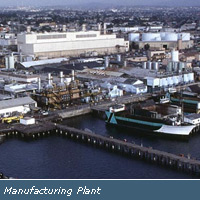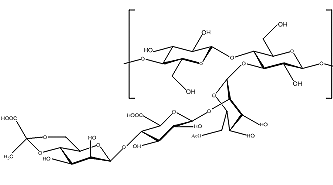

Glycoscience Products & Services

 Xanthan Gum CAS 11138-66-2
Xanthan Gum CAS 11138-66-2Xanthan gum is a polysaccharide produced by the gram negative microbe Xanthomonas campestris. It has unique rheological and gel forming properties and finds many applications particularly in the food and oil industries. Recently, it has been shown that ternary mixtures of Konjac glucomannan, Xanthan gum and Sodium alginate can form a non-covalently linked complex which exhibits enhanced rheological properties of value in, for example, functional foods (Ali Saber Abdelhameed, Shirley Ang, Gordon A. Morris, Ian Smith, Chris Lawson, Roland Gahler, Simon Wood and Stephen E. Harding, An Analytical Ultracentrifuge Study on Ternary Mixtures of Konjac Glucomannan supplemented with Sodium Alginate and Xanthan Gum, Carbohydrate Polymers, 81, (2010), 145-148. Stephen E. Harding, Ian H. Smith, Christopher J Lawson, Roland Gahler, & Simon Wood, Studies on Macromolecular Interactions in Ternary Mixtures of Konjac Glucomannan, Xanthan Gum and Sodium Alginate, Carbohydrate Polymers, 83(2), (2011), 317-328). The structure of xanthan is based on a cellulosic bacbone of β-(1,4)-linked glucose units which have a trisaccharide side chain of mannose-glucuronic acid-mannose linked to every second glucose unit in the main chain.
Some terminal mannose units are pyruvylated and some of the inner mannose units are acetylated.

